Amazon Luna is a game streaming service that is currently in beta and only offered to people of the mainland United States via an opt-in process, as of this time. This is by no means a review, but a casual look into how it performs and what it offers compared to other streaming services. First off, you’ll find that Luna is available to use on PC, Mac, Fire TV, and a web app for the iPhone. Missing from that list is Android, which is quite the shame since I only own one of those supported device platforms, the PC. Being based in the cloud, your device is nothing more than a front end. The real action takes place in server farms far from your home and as such it doesn’t really matter what you access it on. What matters above all is your internet connection. Are you connected via Ethernet, using 5GHz wifi, or an older 2.4 wifi band, etc.

That being said, let’s leave the technical side of things for later and take a look at the service as a whole. Amazon’s Luna is most comparable to PS Now or Vortex, as it offers a subscription-based model to playing their games. You need only subscribe and you’ll have access to their library without having to buy them separately. The most interesting thing here is that there are two subscription plans. One is called Luna+ at $5.99 a month and the other is Ubisoft+ for $14.99. Subscribing to Ubisoft will net you a large portion of that publisher’s game library. With most of their titles being large open-world games and how cheap a lot of them go on sale for, paying that much every month seems like a bit much, from my perspective. A single one will likely take most of us over a month to complete. It makes more long term sense to purchase them elsewhere, like Google Stadia, unless you are the type of gamer that can or enjoys tackling multiple large experiences at the same time.
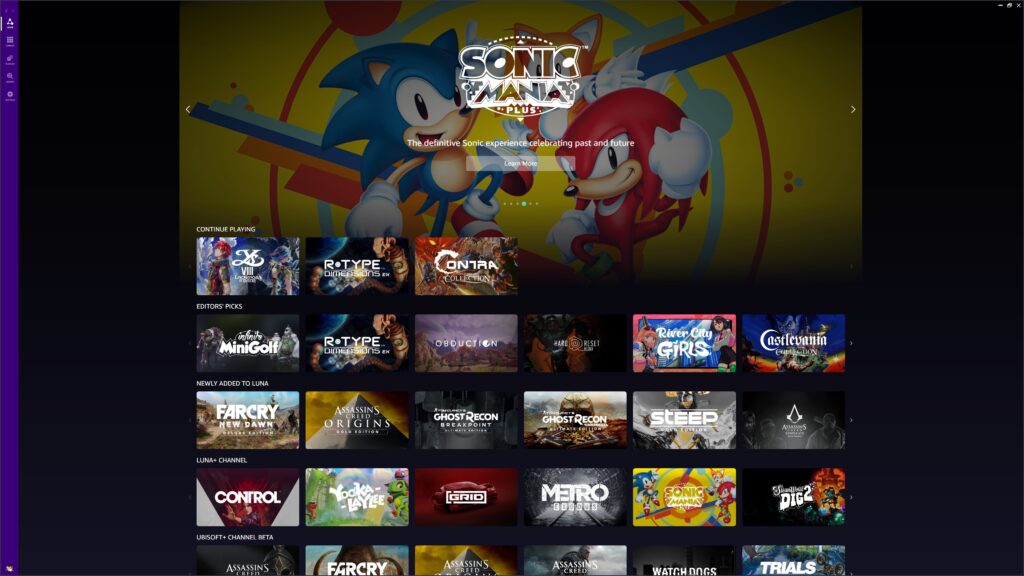
Luna’s 5.99 plan has far more going for it. By my count, there are currently 53 titles for us to play and are quite the impressive selection, spanning multiple genres. Google Stadia in comparison only has 105 games in total, if you count out all the DLC and preorders they unnecessarily mix into their game library to make it seem larger. That service is over a year old. Throw in the Ubisoft+ plan next to Luna+ and they are pretty close in titles overall. Not too shabby for a service in limited early access. Back on topic to Luna’s selection, a large portion of them are Indie titles, with the only big hitters being Metro Exodus and Control. You have some big companies like Konami offering the ‘Contra Anthology’, mid-tier ones like Falcom offering both ‘Trails of Cold Steel 3’ & ‘YS VIII’, then you even have Kickstarter projects such as ‘BloodStained: Ritual of the Night’ or ‘Yooka Laylee’. Not the newest and hottest titles out there, true, but most of them are well worth playing and there is next to no filler.
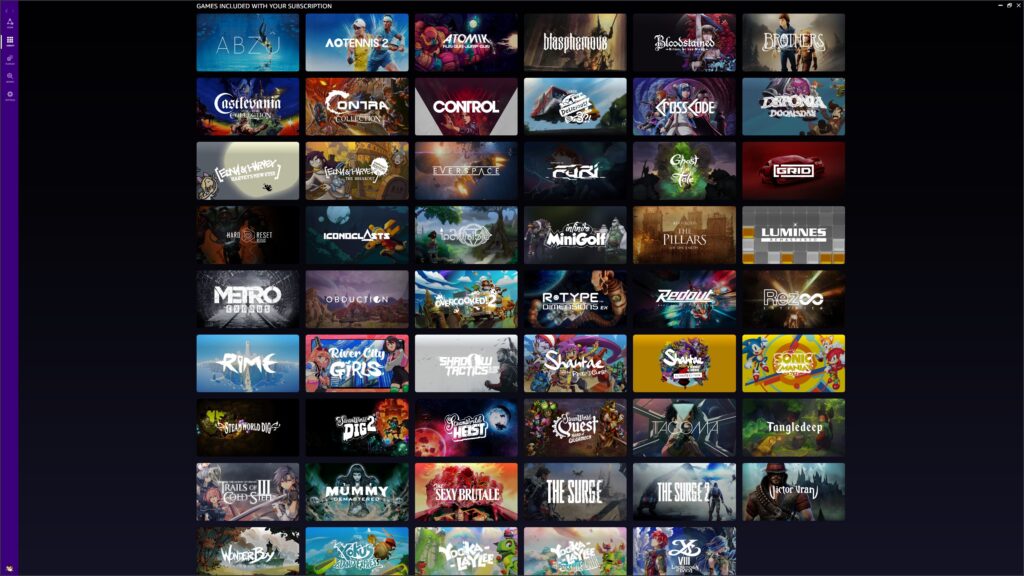
On the PC, you can access Luna either through the Chrome browser or by installing a standalone app. Both have the same layout and features. Whichever one you choose will come down to preference. Open it up and you’ll be greeted with a gorgeous purple background with a ton of readily available information. First up is the Continue Playing section to easily access what you last played. Below that is Editor Picks for their suggested titles, and then you have the Newly Added section to see what has been added since you’ve lasted used Luna. Click on a game then you’ll be taken to a separate page containing trailers, pictures, a description, what resolution it outputs at, and much more. It is easy to use, visually appealing, and has all the information you could want to know. This is hands down the best User Interface of current game streaming services, in my opinion. Luna also implements user’s Twitch streams directly into the game’s page, given you link your Twitch account to it first. It is very reminiscent of Onlive, for those that still remember that service.
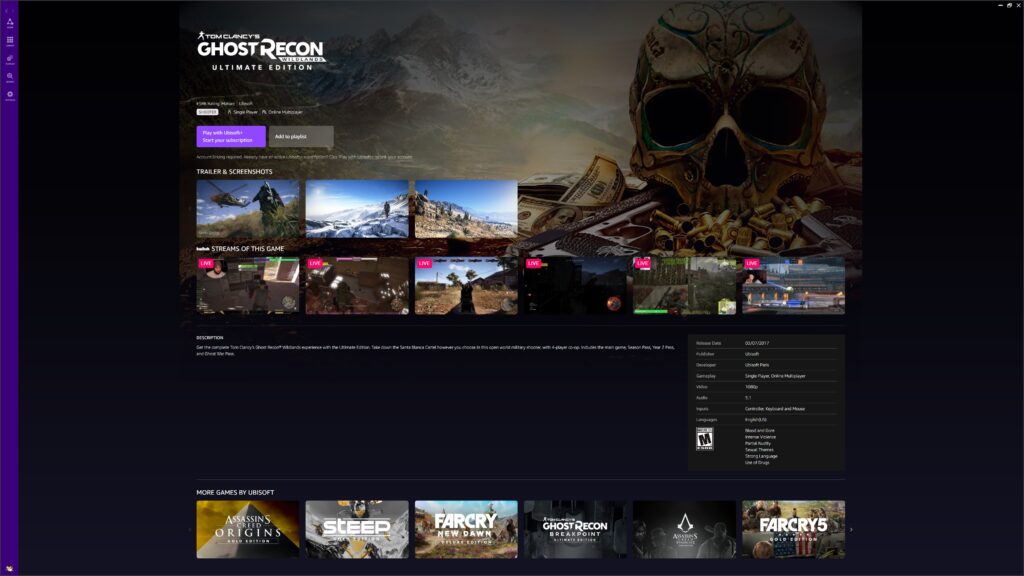
That Twitch implementation is cool, no doubt, but it is far from being convenient to use. It is barely functional at the moment. If you click on a Stream, it will blur out your entire screen and play in a tiny window straight in the middle of your screen. On the standalone app it hitches like crazy, it is unwatchable. Using the browser is better, yet that window is far too tiny on a 4K screen. Worse still is that trying to click out of it and get back to controlling Luna’s interface is a real struggle. You will have to click like mad for it to register that you want to leave the stream and return focus to the Luna interface, whether you use a browser or the app. The stream looks and plays perfectly fine when you enter it on fullscreen, at least. It is early days still and this function is more of a proof of concept than something you should use at the moment.

Before we get to the main event, actually playing games, be aware that you will need a minimum internet speed of 10mbps. Luna currently only streams at 1080p, there are no lower settings for those whose connections may struggle as of yet. They are planning on implementing sub-HD options down the road and even adding in 4K streaming. One more thing to note is that I am using a PS4 controller over Bluetooth, same as I did for every other service I’ve tested. I currently do not own a Luna Controller. Finally, let’s get to it. After gawking at the interface for so long, let’s launch up a game and see what this new player to the game streaming space has to offer. It will launch into fullscreen then show you a splash-screen of that game. On the bottom of that splash-screen is an ad for their Luna Controller. This is an incredibly minor thing and call me pedantic if you will, but I sure hope they don’t plan on shoving other ads in my face. For an early access launch, it’s fine to remind us there is a controller. When Luna is a fully released service and they bump the subscription price up, I hope they don’t go down that path.
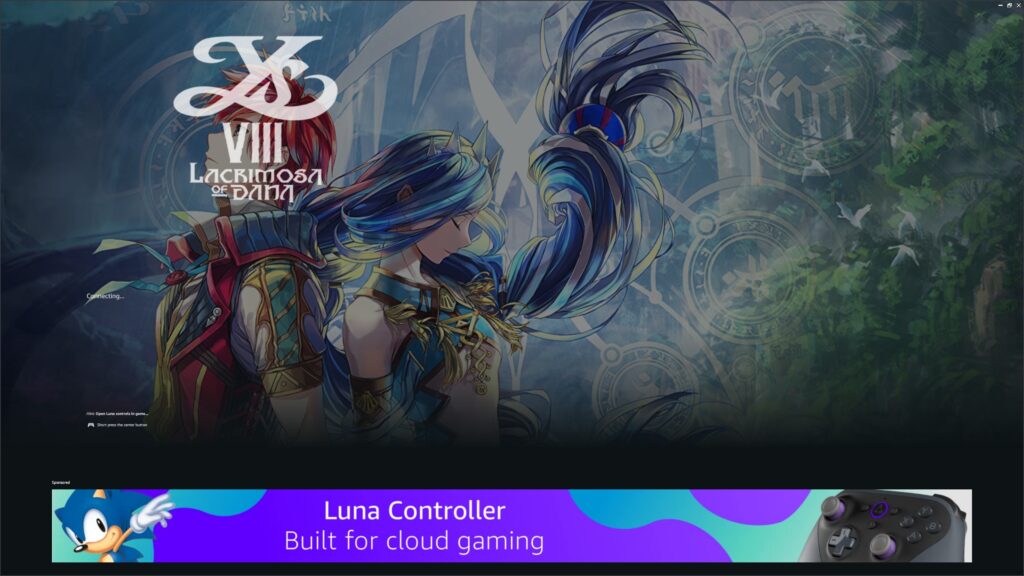
In any case, it will instantly recognize your controller and you’ll be playing in no time. There are no downloads or updates, just click on the game you want to play without worrying about any other fuzz. Luna takes a console-like approach to their games as they do not let you tweak any graphics settings, so no need to go in there other than to turn on subtitles or something of that nature. Whether that is a positive or a negative will come down to your own preference. It may be for the best, though. Much like Google Stadia, the hardware they are using isn’t exactly next-gen and another reminder of how little judging power solely from teraflops matters. From what I could gather, they are using Nvidia’s T4 GPU, which comes in at 8.1 TFLOPS. An Xbox One X has 6 TFLOPS and a PS4 Pro contains 4.2. In theory, it should beat out an Xbox One X, yet much like Stadia’s own hardware, it doesn’t. They are not using hardware made for gaming. Visually, it looks somewhere between an Xbox One and Xbox One X, and that is before it is encoded then sent to your screen over the internet.
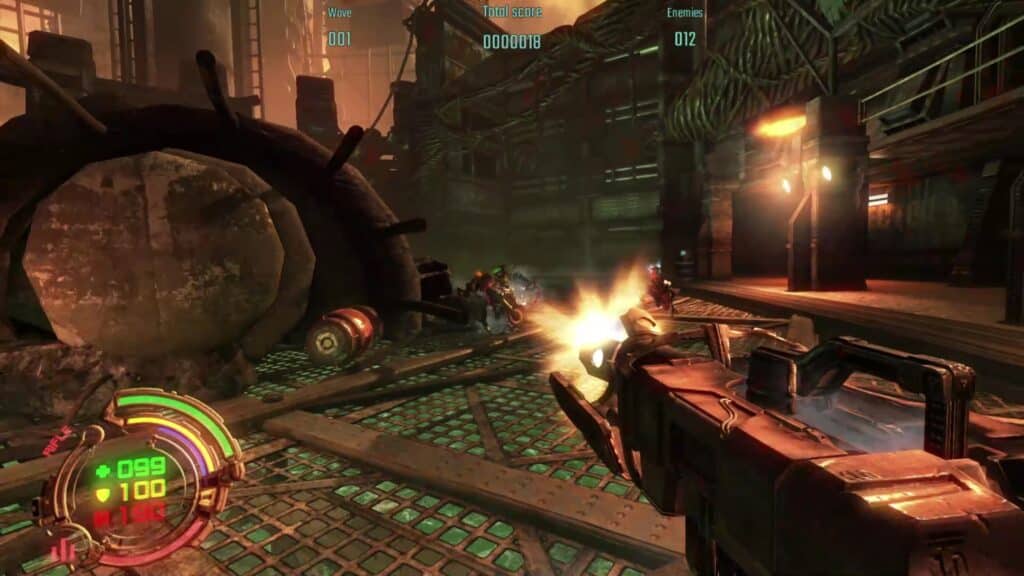
Amazon’s Luna is under-powered right out of the gate and unlike Stadia, released to the public on the verge of next-gen consoles, as well as amazing new PC hardware. It has one very important thing going for it, however. The fact that it runs on a subscription model, instead of buying titles individually. It’d be a tough sell to get your typical gamer to buy their games on an all-new platform with specs like these, but paying six bucks to be able to play 53 titles? That taps into the same ‘that’s a bargain’ feel many have for Microsoft’s Game Pass. Sure the big blockbuster releases like Metro Exodus won’t look as nice, yet it still looks fine. The important part is how it handles. Well, unfortunately, it is only okay as well. The input delay Luna has doesn’t make games unplayable, but it is enough to affect your skills. In fact, the only game streaming service that Luna beats out in that regard is PS Now. Hardly something worth gloating about.
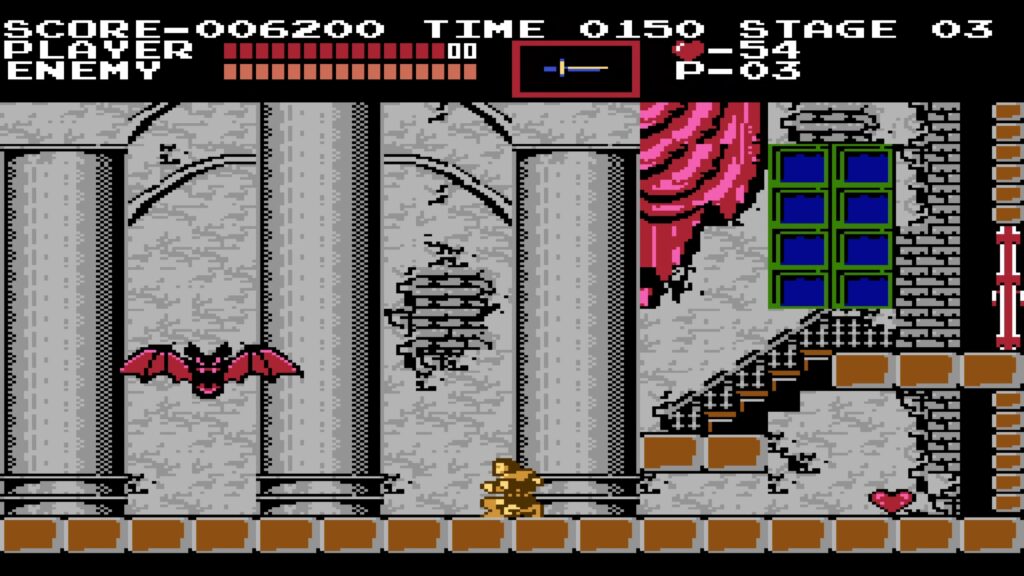
Using a wired keyboard and mouse or plugging the controller in directly did not help matters much. Don’t get me wrong, I’d still gladly play through an entire game, it’s not as bad as I’m making it sound. Just expect significantly more deaths than usual playing fast-paced titles like Contra until you get used to the input delay between you pressing a button and it occurring on your screen. I’d just like to put a reminder that this is an early access service, things are prone to change. Input delay has other uncontrollable factors that give everyone different experiences, such as how far the center that has the hardware is from your own home, whether you have Fiber or Coax internet connection, and whether you are using wifi. Possibly more important is how stable the stream is. The last thing you want during gameplay is hitching and stutters. That is something Luna has no issues with, making both the input delay and graphics something you can get accustomed to.
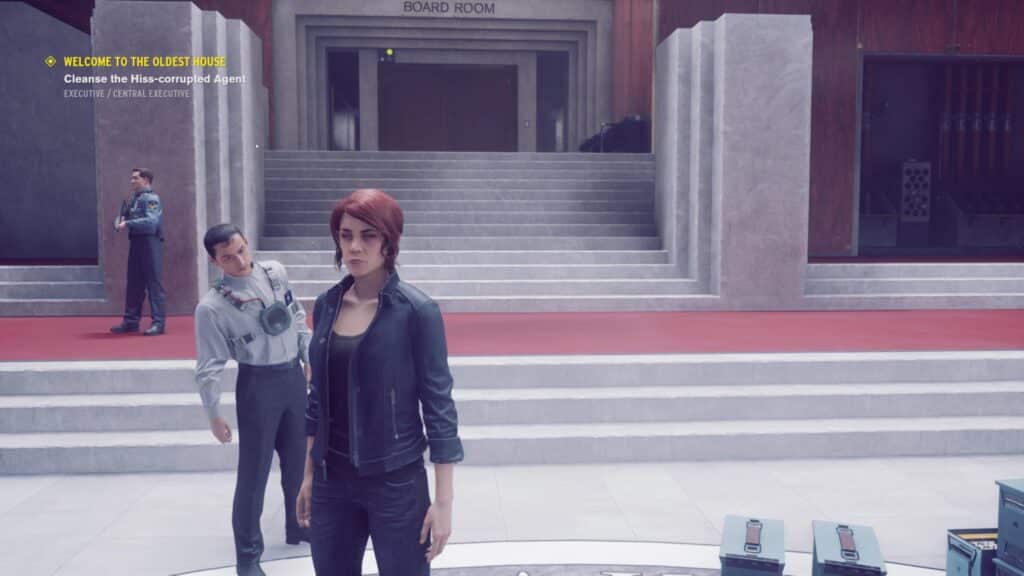
Even using 5GHZ wifi I did not experience any stuttering. Only when I used a 2.4ghz wireless connection did I encounter the rare stutter every here and then. I’ve tested it on a wide variety of desktops, laptops, and even the handheld GPD Windows devices. It all works fine. For the best graphical fidelity, you’ll want a 1080p screen since that is the resolution it streams at. Using a 4K panel does it no favors. Much like other streaming services, it would look great on a small smartphone screen, so hopefully they get around to making an official Android app soon. That is where these types of services truly shine, offering players the ability to play in their homes and effortlessly continuing your session wherever the internet connection allows. Games certainly have a ton more power to work with using Luna than they would on a Switch, doubly so for smartphone titles. This is an area in where they are more competitive than against modern consoles.
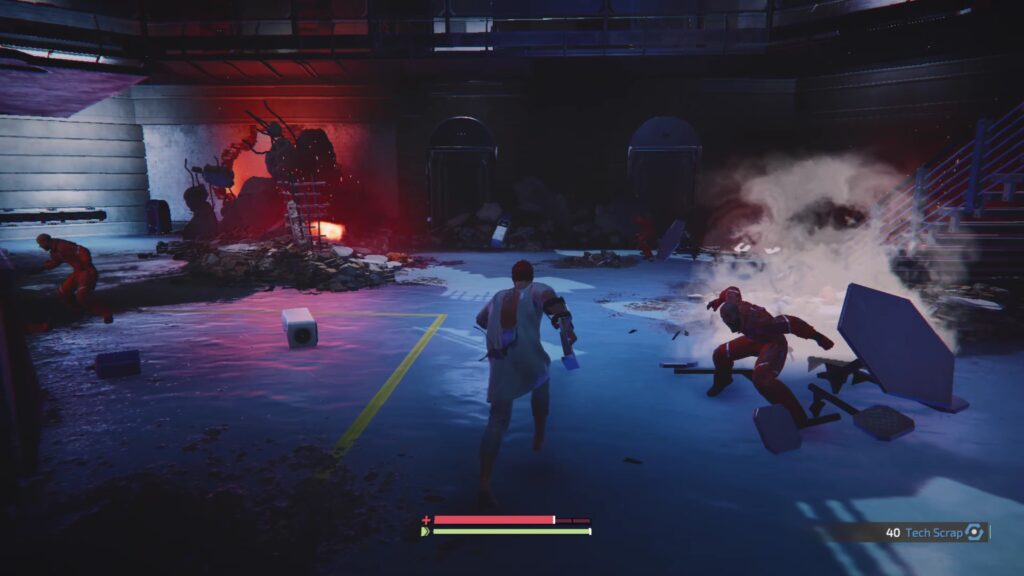
I hope this look into Luna didn’t sound overly negative, that is not my intention. There have just been so many streaming services popping up these past few years that its competition is fierce and looking at it as if none existed would feel kind of disingenuous. While Luna in its current early state lags behind other services in both graphical fidelity and input delay, they are far from terrible. What ultimately matters are the games, which is where this cements itself among all the other services. Paying via its subscription model to access its library is an appealing prospect, and if they keep adding quality titles, that will ensure they retain a good-sized userbase. It has one massive advantage too. Unlike Google Stadia, Luna runs on Windows. Getting games onto this service is a far easier task and I wouldn’t be surprised if they acquire a massive amount of titles onto their platform in a short amount of time. Luna has enormous potential, and even in its current state, is worth paying for, given you want to play something from its current library.
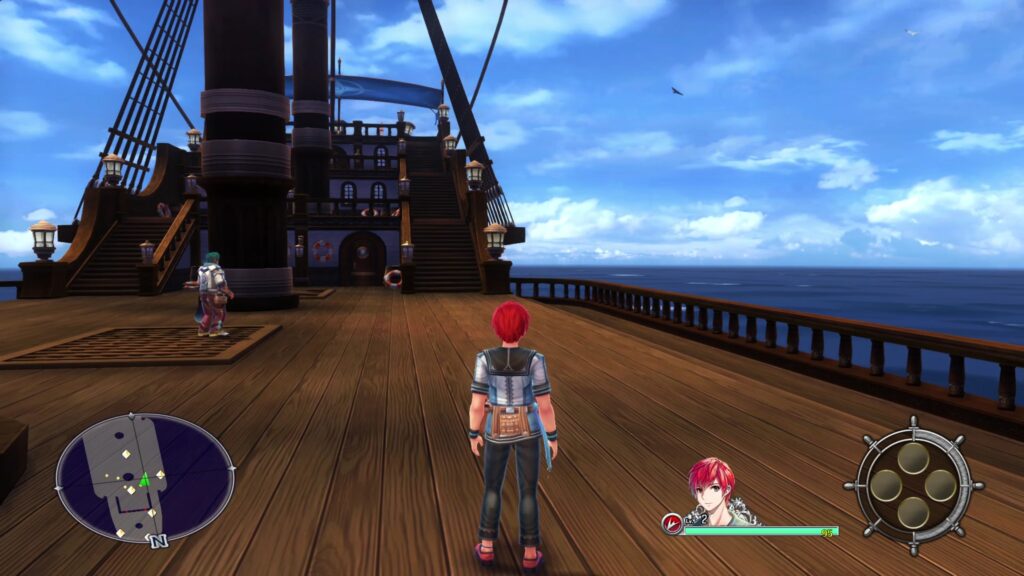
That brings us back to the Ubisoft+ subscription. I’m less enthusiastic about that. It all comes down to the 15 dollar monthly price tag. Once again, you’d be better off buying their titles outright. Their library of massive, open-world games does not lend itself well to this model. More so with how cheap they go on sale for. Even if you don’t have a console or hardware to play it on, Google’s Stadia is the better option to play Ubisoft titles on. It’ll not only be cheaper overall, but you also get a streaming service with much better visuals and input delay for an improved experience. On the opposite side of the spectrum, you can pay a $9.99 subscription for a worse service with PS Now but get a far larger library to play and even Watch Dogs 2 that isn’t on Ubisoft+ as of this time. I’m just not seeing the appeal here, and I can’t think of any other lone publisher that could justify that monthly $15. For a lower price, I could see it being more worthwhile, yet at the same time I’m not too thrilled at the thought of keeping track of even more subscriptions.
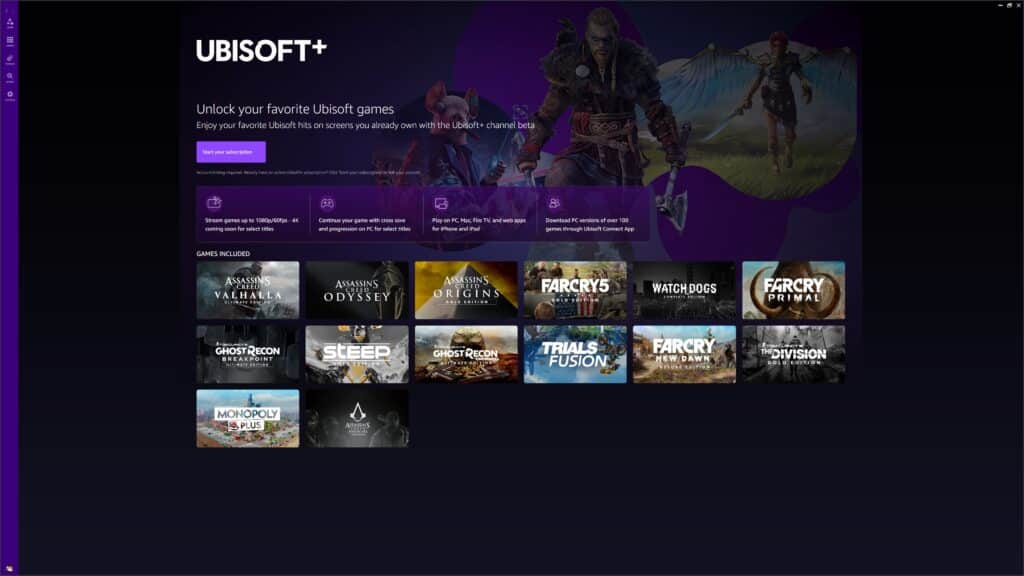
An interesting thing about Luna is that the hardware they are using does support raytracing. I would not expect them to enable it in most titles, however. The hardware is not up to snuff and even the launch game called ‘Control’ has it turned off. Having raytracing for that big, standout title would have been quite the talking point, as only the Geforce Now service supports it as of this review. Not many games use raytracing as of this time, so not much of a loss there, yet that is sure to change in the near future. At the end of the day, Amazon Luna’s main strength lies in the subscription model and not worrying about buying a console. It currently offers a worse experience than most other streaming services, but you do receive a good amount to play without the need to individually purchase anything. Since its release, it has introduced a good chunk of new additions to its library, like Everspace and Crosscode. That flow of new things to try and how relatively simple it is to port titles already on the Windows OS to Luna will be a massive advantage. It is by no means perfect, but on its current trajectory, Amazon Luna will be one of the leaders of the cloud gaming renaissance in my eyes.
- Speer DX Review - April 4, 2024
- The Legend of Santa Review - December 7, 2023
- GROOD Review - December 6, 2023